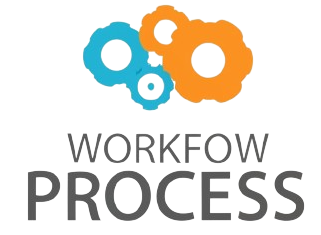The rapidly evolving landscape of artificial intelligence (AI) is reshaping industries and economies worldwide, and Europe is no exception. At the heart of this transformation is a key strategic partnership between Nokia, a historic telecommunications giant, and Nvidia, a global leader in AI computing technology. This collaboration is not only accelerating AI innovation but also strategically positioning Europe as a competitive hub for AI development and deployment. In this article, we will explore how Nokia’s telecommunications expertise combined with Nvidia’s cutting-edge AI hardware and software solutions are driving Europe’s AI revolution, fostering smarter infrastructure, advancing edge computing, and enabling new AI-powered applications that promise to redefine business and society.
Nokia’s leadership in telecommunications infrastructure
Nokia has been a pillar in Europe’s telecommunication infrastructure for decades. With the rollout of 5G networks, Nokia’s role has grown beyond simple connectivity to become a key enabler of AI-powered applications. The high speed, ultra-low latency, and broader coverage of 5G networks provide the backbone for real-time AI processing at the edge, which is essential for smart cities, autonomous driving, and industrial automation.
Practical example: In Finland, Nokia has partnered with local governments to deploy 5G-enabled smart city initiatives that leverage AI to optimize traffic flow and energy consumption. By processing data from IoT sensors using AI models near the source, these projects significantly reduce response times and infrastructure costs, illustrating how Nokia’s infrastructure expertise supports AI advancements.
How Nvidia’s AI hardware accelerates AI deployment
Nvidia’s GPUs and AI software platforms are synonymous with AI innovation. Their hardware accelerates deep learning, allowing complex AI models to be trained faster and deployed more efficiently. By integrating Nvidia’s technologies, Nokia can offer powerful edge computing solutions tailored for AI workloads right at the network edge.
Real-world scenario: A European automotive manufacturer collaborated with Nokia and Nvidia to implement AI-driven predictive maintenance in their factories. Nvidia’s GPUs process sensor data locally on the factory floor, detecting equipment issues before failures occur, minimizing downtime, and saving costs. This use-case shows how Nvidia’s technology enhances Nokia’s ability to deliver AI solutions that bring tangible business value.
The synergy of Nokia and Nvidia powering Europe’s AI innovation ecosystem
The partnership creates a synergy where Nokia’s telecommunications infrastructure meshes seamlessly with Nvidia’s AI computing capabilities. Together, they form a robust platform that supports AI research, development, and commercialization across Europe. This cooperation also supports adherence to European data privacy and security standards, which are critical for enterprises and governments.
Case study: In Germany, a telecom operator utilized a Nokia-Nvidia AI platform to launch an AI-powered health monitoring system in hospitals. The system processes medical images on secure edge servers, ensuring fast diagnostics without compromising patient data privacy. This initiative highlights how the partnership respects Europe’s regulatory environment while advancing impactful AI solutions.
Future prospects: transforming industries with AI-powered networks
Looking forward, the Nokia-Nvidia partnership aims to expand the scope of AI integration into network infrastructure. By fusing AI with network management, industries such as manufacturing, energy, and transportation will benefit from enhanced automation, predictive analytics, and operational efficiency. This has the potential to revolutionize how traditional industries operate across Europe.
Example: In Spain, smart grid projects using Nokia’s 5G infrastructure and Nvidia’s AI processing tools allow energy providers to balance supply and demand dynamically, integrating renewable energy sources efficiently. Such advancements prove how AI-powered networks are becoming critical enablers of sustainability and innovation.
| Application area | Nokia’s contribution | Nvidia’s contribution | Impact on Europe |
|---|---|---|---|
| Smart cities | 5G networks enabling connectivity for sensors and devices | AI edge processing for real-time analytics | Improved urban mobility and energy efficiency |
| Industrial automation | Robust network infrastructure with low latency | GPU-accelerated AI for predictive maintenance | Reduced downtime and higher productivity |
| Healthcare | Secure telecommunications supporting data privacy | AI-powered diagnostics via edge computing | Faster diagnosis and enhanced patient privacy |
| Energy management | 5G-enabled connectivity across distributed grids | AI analytics balancing renewable energy input/output | Improved grid stability and sustainability |
Conclusion
The strategic partnership between Nokia and Nvidia is a powerful catalyst for Europe’s AI revolution. By combining Nokia’s telecommunications infrastructure expertise with Nvidia’s world-leading AI hardware and software, this collaboration is transforming how AI is developed and deployed across the continent. From smart cities and industrial automation to healthcare and energy management, the integration of 5G networks with advanced AI capabilities fosters innovative, efficient, and secure solutions that address Europe’s unique challenges and regulatory frameworks. This partnership not only accelerates AI adoption but also strengthens Europe’s competitiveness in the global technology landscape. As AI continues to evolve, the Nokia-Nvidia alliance exemplifies how strategic collaborations can drive meaningful innovation and unlock new economic and societal benefits.
